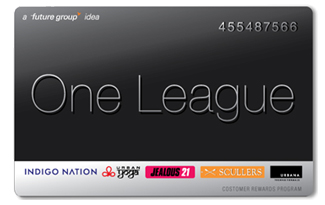Customer Engagement is the lifeline of retail and it has long been established that loyal customers form the bedrock of a profitable retail business. One of the first known instances of customer loyalty marketing dates back as far as 1793, when a US merchant started giving out copper tokens which could be exchanged for free items in the store.
Gradually, customer engagement efforts evolved, creating newer media to reach out to customers, including product catalogues and direct mails to the most modern ones – plastic cards, electronic mail and paper vouchers etc. which are very successfully being used by retailers.
Loyalty Programs have become an important part of revenues for many retailers. For instance, according to the Indian financial daily, Economic Times, there were an estimated 20 million loyalty program members in India in 2010. Multi-brand retailer Lifestyle, (Landmark Group) for example, draws 50% of its annual revenue from around 2 million members of its ‘The Inner Circle’ program, while Shoppers Stop derives 73% of its business from its more than 1.9-million ‘First Citizen’ members the Economic Times added.
The Evolved Customer and Mobile Phones
The arrival of the mobile phone, one of the most disruptive pieces of technology ever developed, has changed the human civilization radically over last decade. With almost 4.9 billion subscribers (77% of the world population) today, the mobile as a device is at once personal; its always on, always present, and always connected, and has changed some of our most deep set habits.
At the same time, consumers themselves have changed; they don’t carry loyalty cards all the time and can’t remember their long membership numbers. The mobile phone as a device plugs in beautifully to the changing shopper behavior and rapid proliferation of plastic cards: by simplifying the consumer interface and making the loyalty programs easier to participate in.
Mobile Based Customer Engagement Programs
In principle, Mobile Customer Engagement Programs are very simple – the mobile number of the customer is used as the main customer key, leading to simplicity of customer engagement. It enables uniquely identification of a customer, easy and cost-effective communication, and authentication while rewarding the customer for favourable behaviour– the three most critical aspects of the customer interface and experience for any loyalty program. By combining this with real time communication, m-vouchers, point of purchase analytics, the simple concept of mobile engagement can become a very potent weapon in the retailer’s arsenal.
Simple, Low-Cost and Effective
The most important aspect of using Mobile CRM is to vastly increase the customer base. Our research indicates that most mobile based CRM programs are able to sign up as high as 80-90%, against 10-15% in card based programs. Operating cost of a cardless program is close to zero, cutting out the cost of cards, and the effort taken in logistics, operations and management, with paper based forms and data entry. Relying on m-vouchers for gratification and SMS/Email for communication can generate massive ROI on investments. The fact that its environment friendly also helps in reducing the perceived cost.
Another key benefits of mobile CRM is that a retailer can launch a simple engagement scheme with data capture without a formal points based loyalty program. For instance, a simple seasonal milestone program (Buy worth USD 200, and get a USD 25 m-Voucher) program can be used to build customer understanding. After studying the program for a few months, a well modeled points based loyalty initiative can be launched with a far better understanding of the consumer buying patterns.
A few Caveats
Easy as it may sound, its also easy to get the initiative wrong. The systems have to be very robust and simple to use so that data is captured in clean and validated otherwise the retailer ends up realizing after months of effort that the data is unusable. Quick search tools across the customer base are an absolute must and the customer database from all the stores must be available at real time at the store level.
It’s also very important to instantly communicate with the customer to give them the reassurance that the data has been captured in the system and cannot be put to misuse by the store staff. Additional features can be developed to ensure store staff doesn’t get access to contact numbers to ensure customer satisfaction. There are additional expectations of personalization of communication which have to be met.
In a form free environment, customer understanding has to be built using past purchases, including the SKUs she buys. Customer Understanding and Analytics become a necessity to ensure meaningful engagement. The ubiquity of mobile numbers also means that fraud detection and mitigation systems need to be very robust and based on analytical techniques to ensure invalid entries are quickly flagged and investigated.
Rapid Adoption
Apparel major Indus League was one of the first retailers to adopt mobile based loyalty programs. Within months, the loyalty conversion for their ‘One League’ program increased by almost 75% compared to its predecessors. Rachna Aggarwal, CEO, Indus League Clothing Ltd. Said, “The biggest benefit members enjoy is that ONE League is now instant! Earlier, it took upto 15 days to credit points to a loyalty account, now it is done the moment a purchase is made. ” Similarly, marquee Indian brands like Peter England, Dabur’s newU, Odyssey Bookstores and Puma India have also successfully launched mobile loyalty programs.
The simplicity of Mobile Based Customer Engagement means that retailers of all sizes can now use powerful data capture tools to build a large customer databases, learning about them and effectively analyzing their behavior and using insights to drive repeat visits and higher transaction values – all that at a very low cost.
